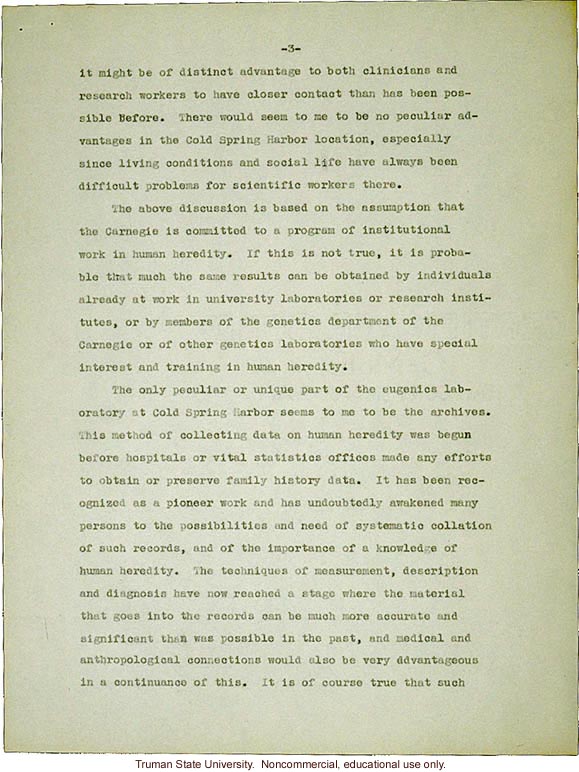-3-
it might be of distinct advantage to both clinicians and research workers to have closer contact than has been possible before. There would seem to me to be no peculiar advantages in the Cold Spring Harbor location, especially since living conditions and social life have always been difficult problems for scientific workers there.
The above discussion is based on the assumption that the Carnegie is committed to a program of institutional work in human heredity. If this not true, it is probable that much the same results can be obtained by individuals already at work in university laboratories or research institutes, or by members of the genetics department of Carnegie or of other genetics laboratories who have special interest and training in human heredity.
The only peculiar or unique part of the eugenics laboratory at Cold Spring Harbor seems to me to be the archives. This method of collecting data on human heredity was begun before hospitals or vital statistics offices made any efforts to obtain or preserve family history data. It has been recognized as a pioneer work and has undoubtedly awakened many persons to the possibilities and need of systematic collection of such records, and of the importance of a knowledge of human heredity. The techniques of measurement, description and diagnosis have now reached a stage where the material that goes into the records can be much more accurate and significant than was possible in the past, and medical and anthropological connections would also be very advantageous in a continuance of this. It is of course true that such


